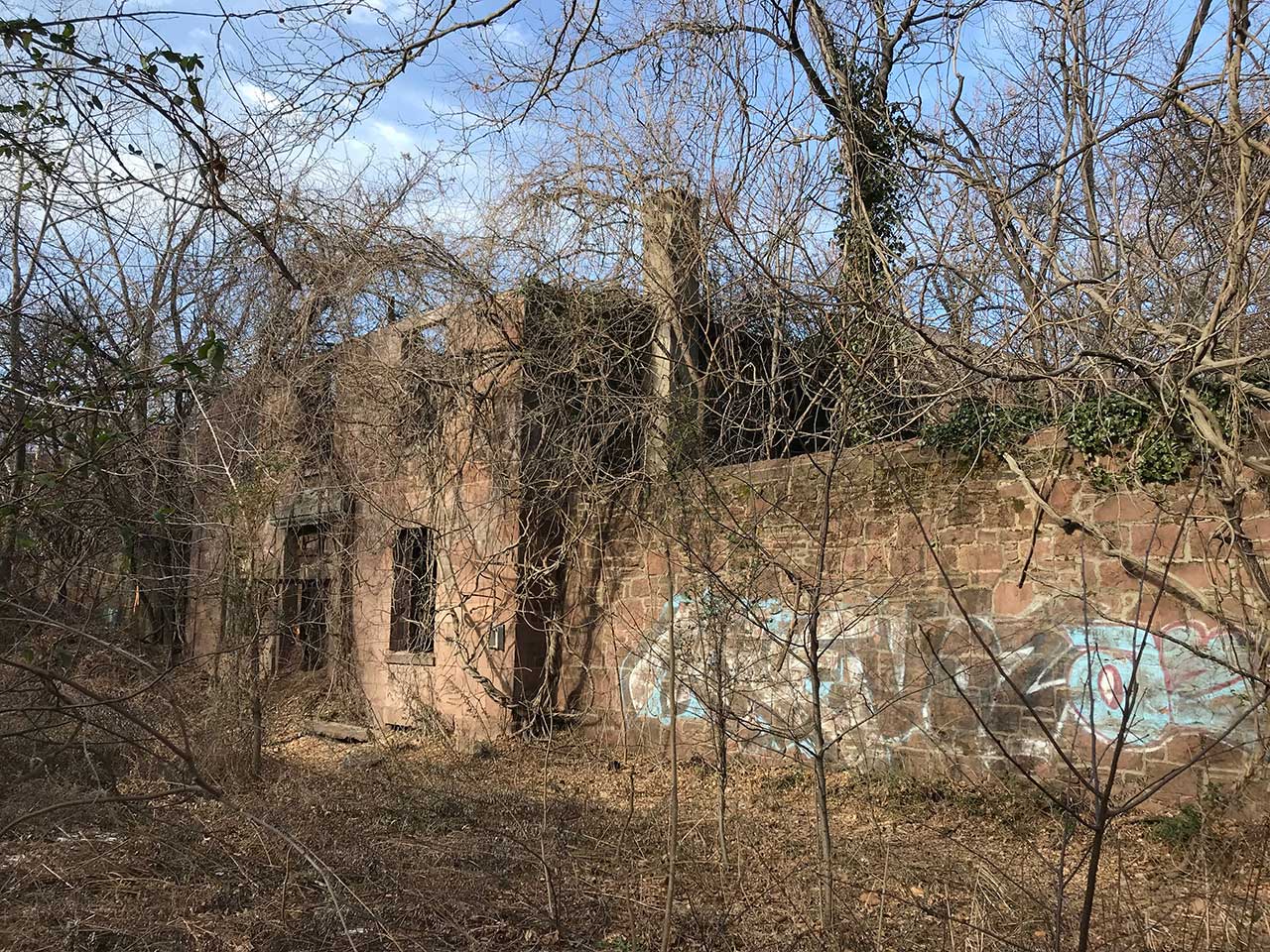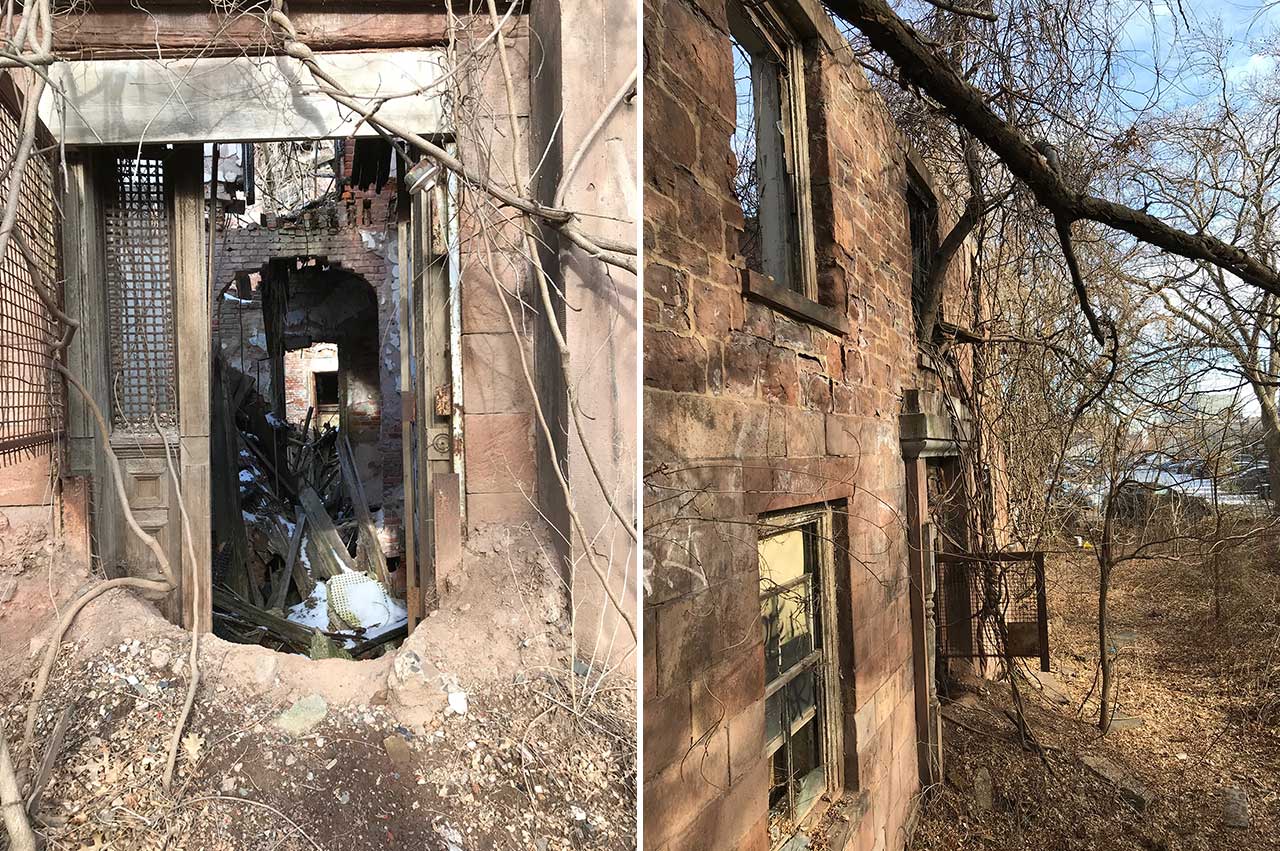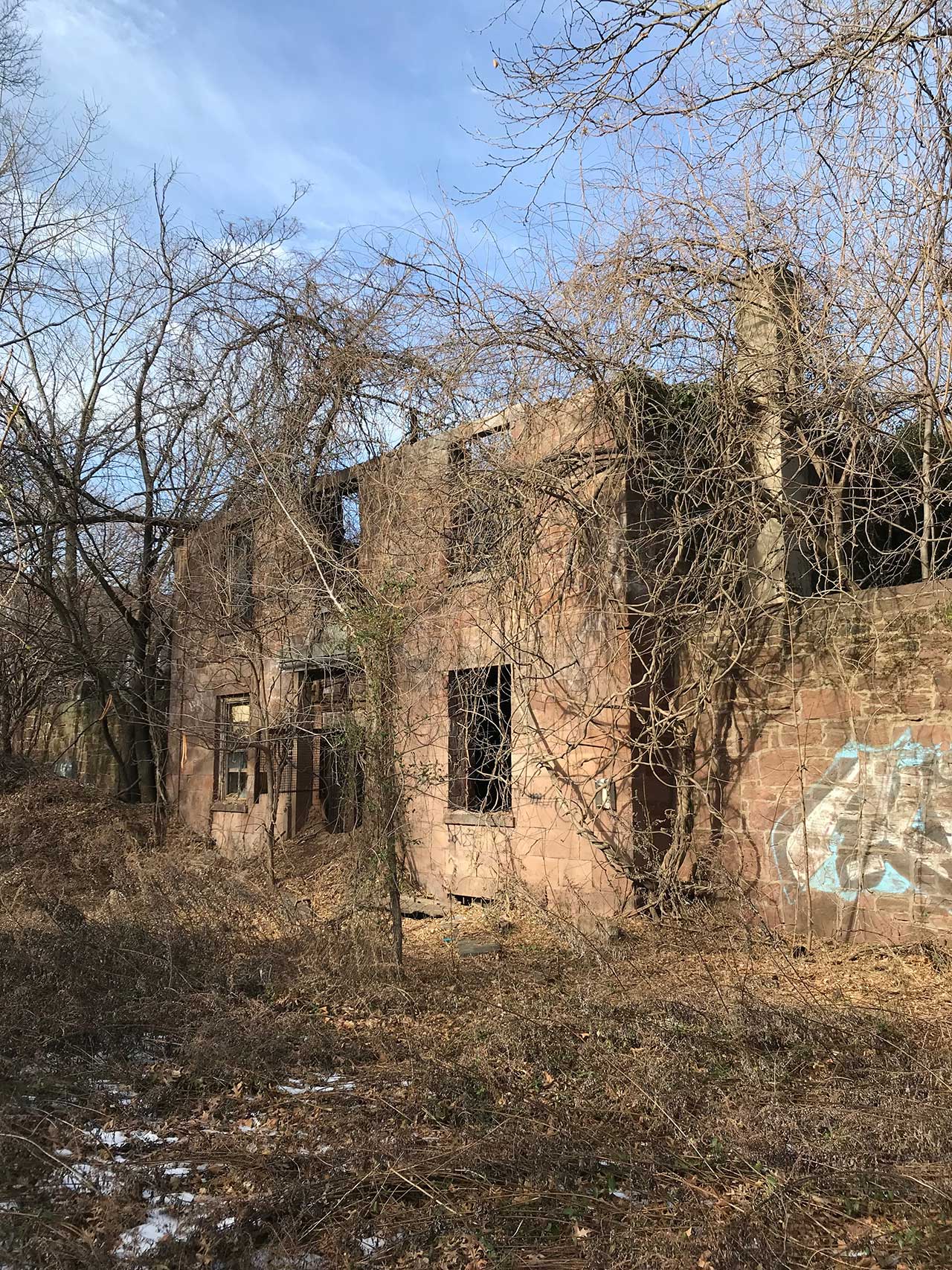As the third oldest city in the nation, Newark has a rich architectural history, notably in its public buildings, churches, and schools. A great many historic buildings, however, were lost over the years during devastating public-works projects, such as the construction of I-280 and high-rise public housing, and the general indifference of past eras to older architectural forms. In this series, we’re highlighting five Newark buildings that are at risk of being lost forever. Read more of the series here.

Monuments are a record of the values we share as a society. What better way to enshrine the lessons we’ve learned from decades of mass incarceration than by transforming the remnants of Newark’s first penitentiary into a gathering place — be it a museum or community center — that might bring about the end of a problematic legacy.
The old Essex County Jail in Newark was built in the 1830s by John Haviland. As the mastermind behind Philadelphia’s Eastern State Penitentiary, Haviland is arguably one of the most prominent architects of the early 19th century because of the hundreds of prisons throughout Europe his designs inspired.

His penitentiary— in the true sense of the word as a place to do “penance” — was, in his time, a new approach to crime and punishment. Today, it is the oldest public building still standing in Newark: but “standing” is a generous term. The complex, which is on the National Register of Historic Places, is both one of the most important structures in the city, as well as the most endangered: most of it is in a late stage of disrepair due to exposure to the elements and a fire that destroyed an entire wing almost two decades ago. What remains owes itself to the strong sandstone walls — and a prayer.
“This is our last best chance to save the site,” said Darius Sollohub, an associate professor of architecture at NJIT. He led an undergraduate studio last semester to brainstorm plans to reimagine it as an “open ruin” with a graffiti park and self-guided tours using augmented reality.

The university’s College of Architecture and Design, led by Tony Schuman, the former interim dean of the department, has taken the lead on determining its cost and feasibility. He, together with colleague Sollohub, is submitting a study about the jail next month to the New Jersey Historic Trust, which has issued a grant for the site to the University Heights Science Park, a consortium including NJIT and Rutgers.
“We’re providing four different options on what to do with the site,” said Schuman, “from razing all the buildings to the ground to stabilizing the walls with buttresses.”
And make no mistake — there is a very real chance the site could be demolished.
“If no one comes up with money to do more work,” said Schuman, “and if no one buys into the idea that this is a useful thing to maintain for the city, then that’s what will happen.”
Their proposal follows in the wake of a landmark exhibition last year about the jail by students at Columbia University. Liz Del Tufo, president of Newark Landmarks, praised their research for contributing a “new layer” to the city’s history. The telling of the city’s history, she lamented, is too often told through the eyes of philanthropists and industrialists, instead of those who “may have fallen through the cracks.”
“We must preserve that history so that we may learn from that history,” Del Tufo said.
The purpose of the exhibition, which featured 11 student proposals, was both to make a case for its preservation, as well as tell the story of the jail, which includes a prison riot in 1968, and the legacy of racism in the prison system. New Jersey has the highest black-to-white youth disparity in the nation, according to the New Jersey Institute for Social Justice (NJISJ), meaning black youth are 20 times as likely to be incarcerated than their white counterparts. “We wanted to look at the jail’s history and raise public awareness about this site and how it reflects different cultural moments that Newark travels through,” said Myles Zhang, the curator of the exhibition, “from the beginning of the city, to the Newark Riots, to the War on Drugs, and create an exhibit that reflected all that.”
Zhang, who is currently studying at the University of Cambridge, remains wary about the motives of the NJIT— which has a history of land banking in the vicinity — and worries it’s more interested in the land than the jail itself.
“What I am concerned about is that NJIT might still try to demolish this site,” said Zhang, “by acquiring it from the city under the pretext of preservation, and then later say that their feasibility study shows preservation is no longer possible.”
While the fate of the jail hangs in the balance, Professor Schuman, who denied Zhang’s aspersions, said he expects to meet with County Executive Joe DiVincenzo, someone who, alone, has the power to decide the fate of the jail. Fortunately, DiVincenzo has already pledged his support publicly. “This area – this old jail — we want to keep the history of what happened,” DiVincenzo once said. “Whether you come up with a museum, or whatever we do, I will be part of that, making sure we get it done. We’ll find the money to make sure it gets done.”
Meanwhile, as the city’s architects, preservationists, and politicians quibble over funding, prison reform advocates are dangling an important figure in front of them to consider. The cost to imprison a young person is $289,000 per year, according to Andrea McChristian, law and policy director at NJISJ. If only we could invest that money in some “front end” kind of a community space at the site — one enriched by input from those impacted by mass incarceration that deters young people from entering the prison system in the first place — McChristian asks, wouldn’t that money be well spent?


